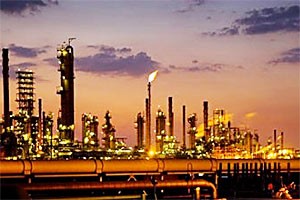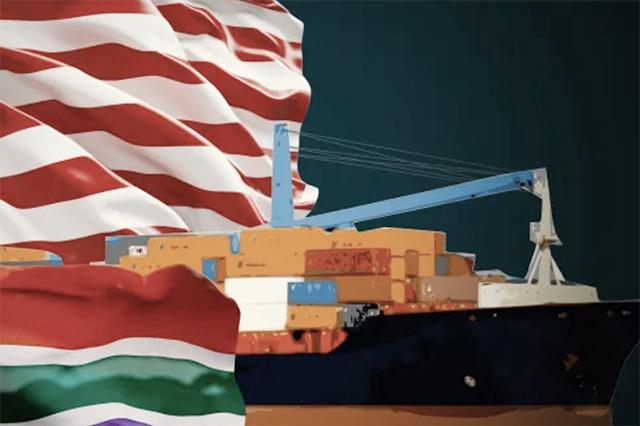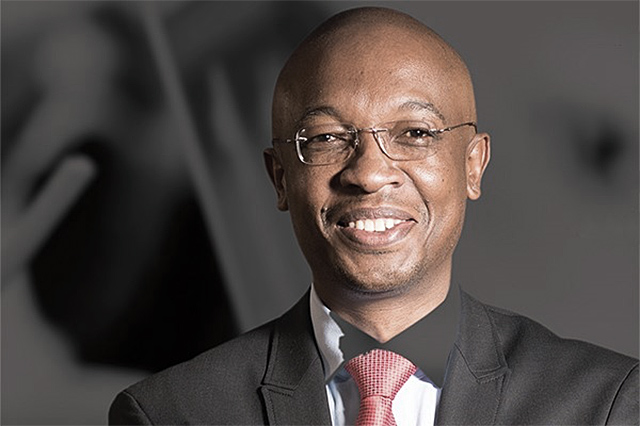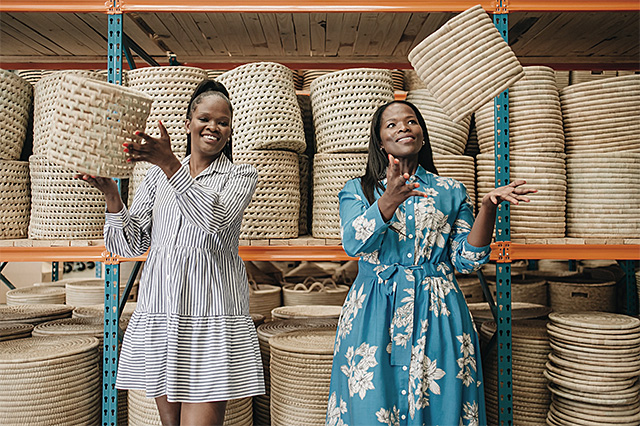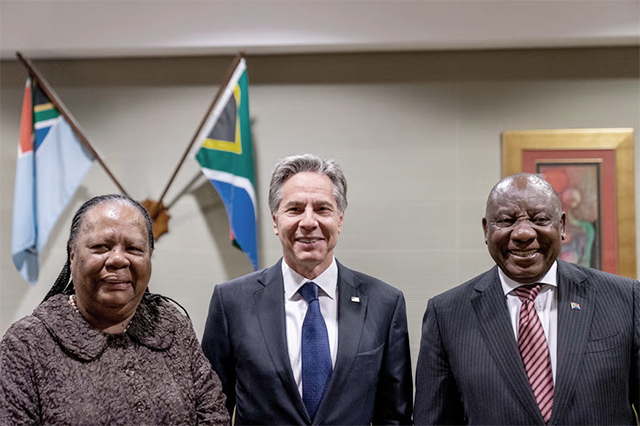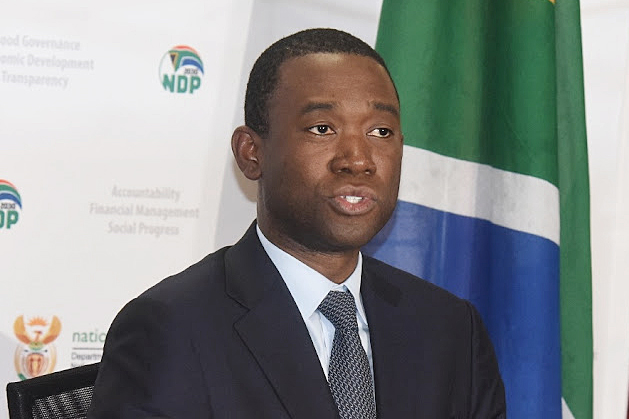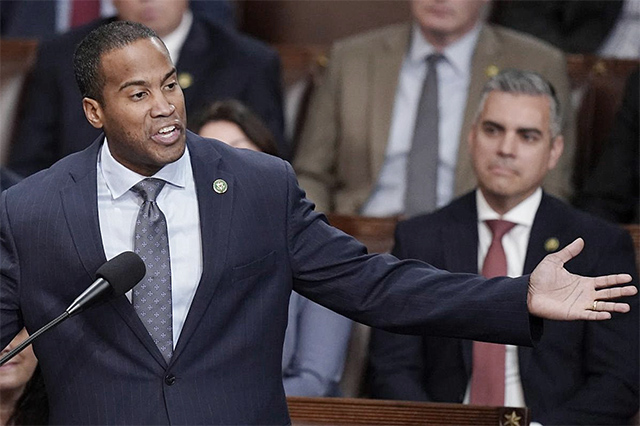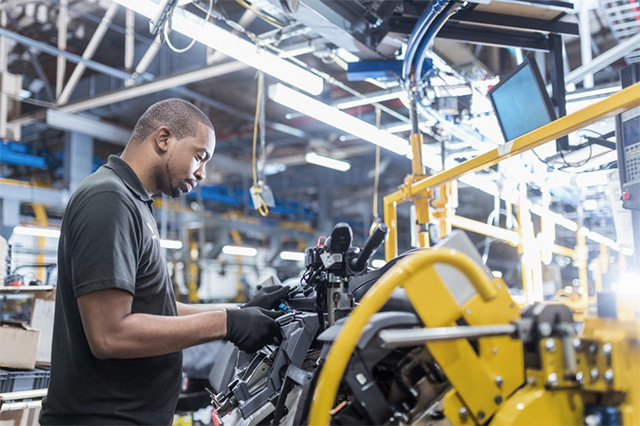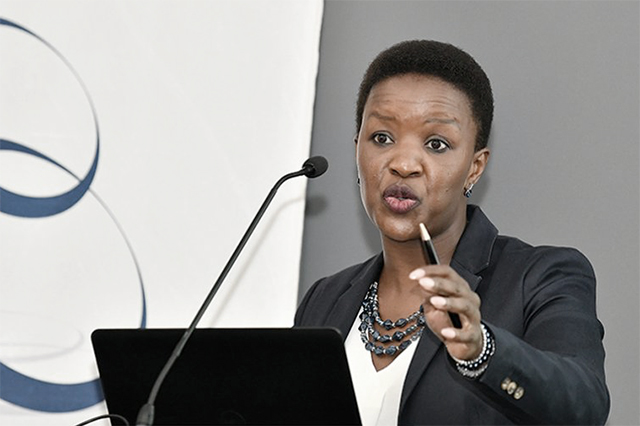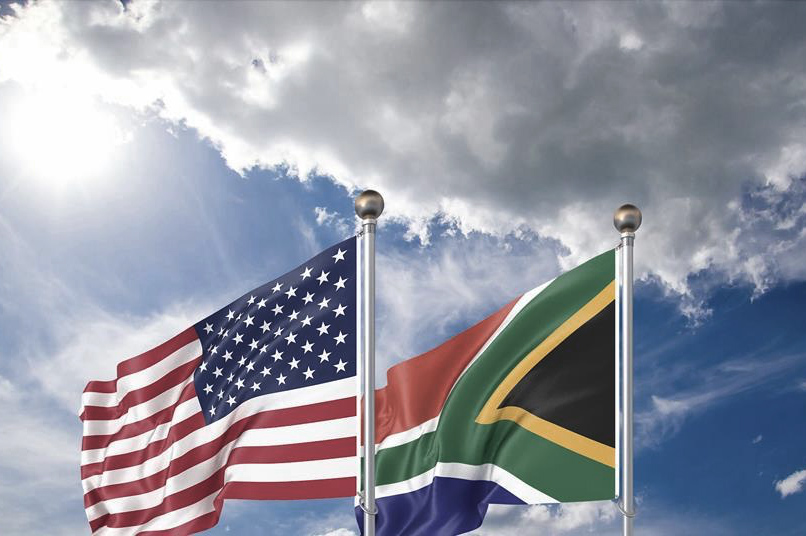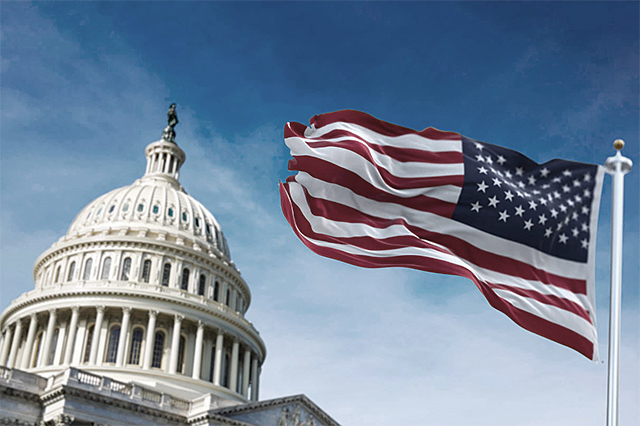South Africa: Turning waste into wealth
Trillions of tons of gas, a by-product of the US shale oil industry, is burnt because low prices make harnessing it for commercial use uneconomical. Sikonathi Mantshantsha examines how Sasol will use its propriety technology to create value out of the gas and, in the process, double its revenue.
A US oil boom brought about by hydraulic fracturing is releasing vast quantities of unwanted shale gas into the atmosphere. Trillions of tons of gas are burnt because prices are low and technology to convert it into useful fuel is scarce. So much of the stuff is burnt up or "flared" that satellite pictures taken at night show some gas fields lit up as brightly as big US cities.
But Sasol plans to change all that while benefiting from the shale gas boom. Over the past three decades, the fuel major has honed the technology that has helped it convert gas into fuel. Its expansion plans in the US centre on taking what's been flared now and transforming it into fuel. And since it is only one of two companies with the expertise to do so, it is projecting a doubling of its revenue and size over the next decade just from this expansion.
For Sasol to achieve that feat, it will invest roughly the equivalent of its current market capitalisation of R277bn in the Lake Charles region of Louisiana in the Gulf of Mexico over the next five years. Initially, it will build two gas-to-liquid (GTL) plants, with a combined daily output of 96000bbl , which will cost US$14bn at the top estimate, transforming SA's torchbearer of scientific innovation and self-sufficiency during the apartheid isolation into a major global energy player.
Those investments will catapult the company into the top-20 biggest global energy companies by market capitalisation in 2018, when the last plant is completed, from around number 50 now. The projects will also make Sasol the biggest foreign investor in Louisiana. The plants are in the design stage, having passed feasibility studies to establish technical and commercial viability last year.
A year before the GTL facilities become operational, Sasol will bring on-stream a $7bn ethane cracker plant, also in Louisiana. Scheduled for commissioning in 2017, the 1,5Mt/year polypropylene, propylene and polymers (used to manufacture plastic-based containers) plant will take Sasol's investment in Louisiana to $21bn. That's the size of the company's market capitali sation on the JSE.
Ironically, Sasol was assisted by the US government's Africa Growth & Opportunity Act (Agoa) programme to break into the tough US market. Its high-end technology, rather than less advanced tech and agricultural produce from the rest of the continent, has been the biggest beneficiary of Agoa in the form of $2bn in incentives from Louisiana state. "We're the biggest beneficiary of the Agoa programme," says André de Ruyter, head of global chemicals and North American operations .
In addition to the US expansion, Sasol is building GTL plants in Uzbekistan and Nigeria. It already holds 49% of Qatar's 48000bbl/day Oryx GTL plant. At current cost estimates, the investments will surpass Sasol's total valuation. What prompted the company to act with such boldness? CEO David Constable says that during the two years he has been at the helm, the company has undergone a "mind-set shift", prompting it to "think big" in its quest to grow shareholder value.
"We came up with goals and a strategy to make Sasol a great company," he says. Its new strategy is dubbed Project 2050 and dictates that it has to find cheap and sustainable feedstock to accelerate its growth. That's what has attracted it to the US, says Constable.
The US has abundant shale gas, whose low market price makes it a cheap input in the production of vehicle fuels. Advanced drilling technologies have shifted the US towards greater self-sufficiency as an oil producer and a by-product is tons of unused gas. That works in Sasol's favour.
The US's natural gas reserves were estimated to be 317,6trillion cubic feet (tcf) at the end of 2010, the latest annual reserves estimate available, a 12% increase on the previous year's figure, according to the government's Energy Information Administration agency. The report, compiled in August 2012, says most of that gas is in five states both onshore and offshore around the Gulf of Mexico region, where Louisiana lies.
In 2010 the US produced 23,2tcf of wet natural gas, but oil companies are increasingly resorting to burning the gas off - the safest way of getting rid of unwanted gas. The Financial Times reported in January that the state of Texas, which borders Louisiana and has exposure to the largest offshore fields in the Gulf of Mexico, approved 1963 permits to flare "stranded" gas in 2012, nearly seven times more than the 306 issued in 2010.
The National Aeronautics & Space Administration said in January that the volume of gas flared in the US has tripled in just five years due to the boom in shale oil, and the flares are now so bright they are visible from space. That's what attracted Sasol to the shores of Louisiana, says Constable. "The very reason we went to the US, to Nigeria and to Uzbekistan is to exploit, to relieve them of their stranded gas, which they otherwise have to flare."
Constable says Sasol's technology gives it the ability to turn "anything that is gas into a high-value product". As gas is often a by-product of the oil production process, many oil producers become unwitting gas producers. "There are many gas producers [in the area] but they don't know what to do with the gas," says Constable. "They therefore resort to burning it off. But we can use it. That's the cheap feedstock that our mega projects need."
Sasol and Royal Dutch Shell are the only companies that have been able to convert gas to liquid vehicle fuel on a commercial scale. Constable says that's because of the technology's very high barriers to entry. Sasol is banking on that to give it a competitive edge. In addition, the abundance of shale gas has depressed prices to such an extent that it has become uneconomical to invest in pipeline infrastructure to deliver the gas to homes and factories in the US.
The price of Henry Hub Gulf Coast shale gas has collapsed under the weight of large volumes, falling to below $4 per million British thermal units (mBtu) in the third week of May, from a high of $13,31/mBtu in 2008, according to data from the Energy Information Administration.
The result is that oil companies are burning off gas equivalent to that needed to power the nearly 10m homes of Chicago and Washington combined, says the Financial Times. Sasol's rare technology means the waste can be converted economically to diesel, says De Ruyter. "Shale gas is a game-changer and has created great opportunities for us to extend our presence in the world."
As Sasol converts the gas to vehicle fuel, its GTL investments are commercially viable with the price per mBtu of gas equivalent to 10% (1:10) of the Brent crude oil price, says De Ruyter. That means gas must cost a tenth of the barrel spot price for Sasol to reap the rewards. However, the spread dropped to a ratio of 1:26 during May with gas at $3,9/mBtu and oil at $102/bbl, where a barrel of oil cost the same as 26mBtu of gas, meaning Sasol's margins have ballooned as it sells the finished product based on the oil price.
At some stage the ratio widened to over 1:32, boosting profitability in countries such as Qatar and SA. "Oil has now become very expensive relative to gas," says De Ruyter. He won't divulge Sasol's exact profit level, except to say oil at $90-$100/bbl meets the company's targeted rate of return. "With gas at $5-$6/mBtu and oil above $100/bbl, we'll continue to make good money."
Though the US has extensive gas pipeline infrastructure that enables gas to be piped to homes and industry, the supply glut has made it cheap because it cannot be easily transported to other countries due to the huge investments needed to modify fuel tankers.
Also, the US government had artificially depressed prices by maintaining tight restrictions on gas exports, thus limiting the market. Only in the third week of May did the Obama administration lift restrictions by approving legislation that allows for gas exports to countries that do not have a trade agreement with Washington, including Japan and several European countries. The expanded market may therefore have a slight inflationary effect on gas prices.
Sasol remains relatively unencumbered by competition, even outside the US. Major energy companies, including ConocoPhillips and ExxonMobil, announced plans to build GTL plants in Qatar, but subsequently backed out. BP and ConocoPhillips went as far as building and running demonstration GTL plants in Oklahoma and Alaska, but never progressed to commercial operations.
Royal Dutch Shell's Pearl plant, also in Qatar, is the world's newest and largest plant in operation, with maximum capacity of 140000bbl/day. Shell says on its website the plant was built at a cost of $19bn and delivered its first fuels in June 2011. It has been reported in the New York Times that the cost is more than three times what was originally projected and that the plant has been plagued with unexpected maintenance problems.
Analysts and industry insiders say the technology makes sense only when oil and gas supplies and prices are far out of balance, as they are now in the US. "The reason you see so few GTL plants is that the economics are challenged at best," William M Colton, ExxonMobil's vice-president of corporate strategic planning, told the New York Times in December.
While Sasol agrees with this, sceptics slate GTL plants as future white elephants when the prices of oil and gas come into alignment. "We do not see it being a relevant source of fuels over the next 20 years," says Colton. Sasol can face a margin squeeze when gas becomes more expensive and oil cheaper, says De Ruyter. "We don't bank on gas to always be this cheap, or for oil to always be this expensive. But if the gas-to-oil ratio squeezes, we still have a plan."
That plan would be to release to the market gas from its substantial fields in Canada, where it holds a licence to extract and sell gas. If gas prices rise, Sasol would benefit from sales, but supply surpluses could also help it keep prices in check. In the US Sasol has no licence to the gas fields, so it will buy it from producers to feed its plants, says De Ruyter. That would then help improve the gas-to-liquids margins at Lake Charles.
The company's shale gas reserves at Alberta in Canada are big enough to provide about 60% of the daily needs of the plants to be built at Lake Charles in Louisiana. "Our Canadian gas reserves help us and work as a major risk management tool," says De Ruyter. The interconnected gas pipeline infrastructure in the US and Canada means Sasol will be able to influence the price in the US, maintaining some control in its fuel production cost while enjoying the international market price of crude oil.
These investments will not only serve to double Sasol's business, they will also help with its geographic diversification, says Constable. When all the major projects are operational, sub-Saharan Africa's revenue contribution will fall to 52%, from 66% now. North America's contribution will rise to 43% of group revenue, says Constable.
The company will implement the investments in phases to minimise risk and to spread out the gearing required. It will start with the ethane cracker plant. Says Constable: "We'll do the ethane cracker first and let our board and investors see for themselves our execution skills and ability."
Execution of the first phase will give the company's stakeholders the reassurance that it has the necessary skills to execute mega projects. That would then give the board confidence to go ahead and implement the rest of the investment plan.


